12 KPIs for SaaS Tech Startups should monitor
12 SaaS KPIs tech startups should monitor for optimum success
A quick search of Google reveals that there are anywhere between 8 and 32 must-track SaaS KPIs for tech startups to track to ensure they are in control of their business. Creating a SaaS KPI dashboard of 32 different indicators could easily lead to information overload and action paralysis, so we suggest starting with these top 12 key performance indicators. The most useful KPIs fall into four distinct categories, as follows:
- Sales/Marketing
- Revenue and Growth
- Customer success
Some of the top 12 KPIs appear in more than one category.
- Sales/Marketing SaaS KPIs
Within this category there are six important KPIs to consider. These are Monthly Recurring Revenue (MRR), Annual Recurring Revenue (ARR) – sometimes also known as Annual Run Rate, Average Revenue per Account (ARPA), Customer Acquisition Cost (CAC), Customer Lifetime Value (CLTV), Customer Conversion rate and the Quick Ratio.
Let’s look at how to calculate these key metrics for a startup and why to use KPIs.
Monthly Recurring Revenue is the monthly income from new sales, renewals and upgrades, whereas
Annual Recurring Revenue is the same but for the whole year. Our
blog about MRR and ARR can help you decide if you need to track one or both and how to calculate them.
MRR helps you to understand the current performance of the company whereas the ARR is a helpful predictor of future income streams. Annual Recurring Revenue doesn’t take into consideration any seasonal variations in sales so bear this in mind when calculating your ARR as 12 times your MRR.
Average Revenue per Account is calculated by taking the MRR and dividing it by the number of accounts for the period in question. ARPA can help companies to understand which customers, services and products are generating the most revenue.
Customer Acquisition Cost is the amount of money is costs you to gain a new customer. You calculate it by dividing the total cost of sales and marketing by the number of new customers for the period in question. This metric can help you to determine whether you can afford to spend more money on sales and marketing and whether the campaigns are worth the effort.
Another of the ley metrics for a SaaS startup is
Customer Lifetime Value or CLV. This calculates an estimate of how much money a customer will spend over their entire relationship with your business. You work this out by calculating your Customer Churn rate first (see below). Once you know your Customer Churn, you can use the following formula to calculate your CLV:
ARPA x (1/Annual Customer Churn rate)
An example will help here. If your annual churn rate is 20% and your APRA is £5000, then your CLV is 5000x (1/0.2) = £25,000.
Your
Customer Conversion rate is a measure of how successful your sales process is. Conversion rate can be calculated in a variety of ways depending on your sales process. However, for SaaS companies, one of the most common ways to calculate conversion rates is to use the following formula:
(Number of free trial customers who go to paid software) / (number of free trial customers) x 100.
Some companies might calculate the conversion rate as the number of sales divided by the number of visitors to a specific page on a website or the number of sales as a percentage of the number of proposals. Whichever way you decide to calculate it, keep it consistent over time so you can monitor the trend in conversions.
Finally, under the Sales category, we suggest calculating the
Quick Ratio. This SaaS KPI is useful for determining how well you are growing. A quick ratio of at least 4 is a good benchmark of a successfully expanding company. You can calculate your Quick Ratio as follows:
Quick ratio = (MRR added + expansion MRR) / (MRR downgrade + Churn MRR)
For example, a company has new MMR added of £15,000 + £5,000 of upgrades. They have £2,500 of downgrades and £1,500 of Churn). So (15+5)/(2.5+1.5) = 5. This shows that the company is successfully bringing in new accounts and upgrades faster than the rate at which customers are leaving or downgrading.
2. Revenue/Growth KPIs
Within this category of KPIs, aside from MRR, ARR and Quick Ration which are also Sales measures, you could consider tracking Customer Conversion rate, Customer Churn Rate, Revenue Churn, Net Burn Rate and Viral Growth. Each of these KPIs helps your startup to assess how well your revenue is increasing.
Churn rate is a measure of how many customers you are loosing over the period in question. You calculate it by dividing the number of customers cancelling by the total number of customers. If your business has 100 customers cancelling in a year where the total number of customers was 2,500, then your attrition or churn rate is (100/2500)*100 or 4%. It’s a good idea to keep an eye on this number and take action quickly if you see it creeping up.
On a similar theme, but using ££ instead of customer numbers,
Revenue Churn calculates the % of revenue lost over the period. The calculation is Revenue churn = (revenue lost from lost customers) / (total revenue at beginning of period) x 100.
A company has lost revenue of £17,500 for accounts that left or downgraded. If the total revenue was £350,000, then the revenue churn was (17,500/250,000)*100 = 5%
Net Burn Rate
shows how much money is being used each month to keep the company in business. For startups burn rate can be high. If you are spending £25,000 a month and bringing in £15,000 MRR then the net burn rate is £10,000. You can work out how much longer you can stay in business without any new investment by looking at your cash reserves and your net burn rate.
Viral Growth
is the last SaaS performance metric in the Revenue/Growth category. Sometimes also known as viral coefficient, it’s used as a good indicator of company growth and brand awareness. The viral growth is calculated as the number of invitations sent from current users x conversion % / 100. A viral growth of over 1 is considered good and helps to reduce your customer acquisition cost.
3. Customer success KPIs
The main metric to look at here is the Net Promoter Score (NPS). The NPS measures customer satisfaction and shows your customers' willingness to promote your products to others. The formula you need is:
NPS = (# promoters / total # of survey respondents x 100) - (# detractors / total # of survey respondents x 100).
From a high score of 10, promoters are those giving your product/service 9 or 10, detractors are those giving 0-6. Scores of 7 or 8 are ignored when calculating NPS. Out of a survey of 100 people, 59 gave 9 or 10 and 11 gave 0-6 with 30 giving 7 or 8. The NPS is therefore 59 – 11 = 48.
How do you decide which KPIs to use?
It can be challenging to create the most useful dashboard of performance indicators and you may need to adjust what you track and how you track it over time to maintain the value in producing SaaS KPIs. There are many more metrics you could choose to track relating to your website performance, social media marketing, operational KPIs as well as internal measures such as employee satisfaction. Don’t try to track everything as you can become overwhelmed – just pick the top ones and focus your efforts there.
How On The Go can help with SaaS KPI reporting
If you would like to explore how to set up relevant KPI tracking for your tech startup, contact David Masih, our client relationship partner. David can provide information on how we’ve helped other businesses to grow using the right performance metrics. Call 03330 067 123 or email info@onthegoaccountants.co.uk and have a chat to us today.
You may also be interested in:
What is Net Cash Burn rate and how to calculate it
How to write a tech startup business plan





